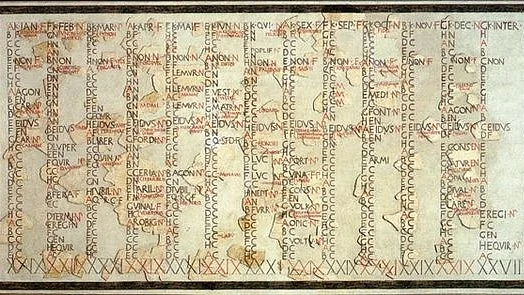Imagine a year so long, it had 15 months and lasted 445 days. That was the year 46 BC, also known as the Year of Confusion. This period in Roman history was marked by a chaotic calendar system that was wildly out of sync with the seasons, causing confusion and disruption in everyday life.
A Calendar in Disarray
The early Roman calendar was a lunar calendar, with 10 months based on the cycles of the moon. This system, however, was not very accurate and often drifted out of alignment with the solar year, which is based on the Earth's revolution around the Sun.
To address this discrepancy, King Numa Pompilius introduced two additional months, January and February, in the 8th century BC. This brought the calendar year closer to the solar year, but it still wasn't perfect. The calendar continued to drift out of sync, with harvest festivals falling in the middle of spring and other seasonal events occurring at the wrong times.
Enter Julius Caesar
By the 1st century BC, the Roman calendar was in a state of disarray. Festivals were no longer aligned with the seasons, creating confusion and disrupting agricultural practices. Recognizing the need for reform, Julius Caesar embarked on a project to overhaul the calendar system.
Caesar enlisted the help of Sosigenes, an astronomer from Alexandria, to devise a new calendar that was more accurate and aligned with the solar year. Sosigenes proposed a solar calendar with 365 days, with an extra leap year added every four years to account for the slight difference between the solar and lunar years.
The Year of Confusion
To implement the new calendar, Caesar had to make some drastic adjustments to the existing calendar. The year 46 BC was already scheduled to have an additional month, called Mercedonius, inserted to bring it into alignment with the seasons. However, Sosigenes determined that Mercedonius alone wouldn't be enough.
Therefore, Caesar added two never-before-seen months to the year 46 BC: one with 33 days and another with 34 days. This extended the year to a staggering 445 days, making it the longest year in recorded history.
The Legacy of the Year of Confusion
The Year of Confusion marked a significant turning point in Roman history. It was a time of great change and upheaval, but it also paved the way for a more accurate and reliable calendar system.
Caesar's reforms laid the groundwork for the Julian calendar, which remained in use for centuries. Although the Julian calendar had its own limitations, it served as a stepping stone for the development of the Gregorian calendar, which is still used today.
The story of the Year of Confusion highlights the challenges and complexities of creating a calendar system that is both accurate and practical. It also serves as a reminder of the ingenuity and resourcefulness of those who have sought to solve this age-old problem.



















